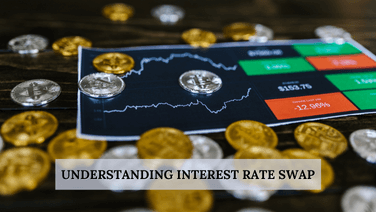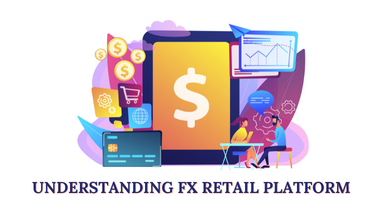Understanding Interest Rate Swap
5 September 2019 | By IFA Global | Category - Financial Market Products and Strategies

What is an interest rate swap?
Swap: An exchange of one thing for another
An interest rate swap is an agreement between two parties to exchange a series of future cash flows. Specifically, the two counterparties agree to exchange one stream of cash flows against another stream. These streams are called the legs of the swap. The swap agreement defines the dates when the cash flows are to be paid and the way they are calculated. Swaps can be used to hedge certain risks such as interest rate risk or to speculate on changes in the prices of the underlying. Most of these swaps are traded overthe-counter (OTC) and are "tailor-made" for the counterparties.
How it works?
- A borrower would pay fixed and receive floating when they expect the interest rates to head higher. Whereas they would do pay floating and receive fixed when they expect the interest rates to decline.
- The duration of an IRS is the duration of the fixed leg minus the duration of the floating rate leg. For example, if one is a fixed rate receiver (floating rate payer), then he can consider himself as being long a fixed coupon bond and being short a bond with floating coupon payments. Since the interest rate risk in case of a floating rate bond is only till the next reset, its duration is small in comparison to the fixed leg. Therefore, the effective duration of such a swap is positive. Likewise, the effective duration of a Pay fixed (receive floating) swap is negative and therefore it can be used as a hedge against a long bond portfolio.
- If one has a Held to Maturity Investment portfolio and one sees the interest rates heading higher, the exposure can be hedged by a Pay fixed Receive floating swap, If one has a fixed rate loan book and one sees the interest rates heading lower, the exposure can be hedged by using a Receive fixed, Pay floating swap
Major swaps in usage are Interest Rate Swap and Currency Swap.
Plain Vanilla Interest Rate Swap:
In a plain vanilla interest rate swap, two counterparties agree to exchange interest cash flows on a periodic basis for a predetermined length of time. Usually, one party will pay a certain fixed interest rate to the other while receiving an amount that is based on a benchmark floating interest rate. This constitutes a "fixed-for-floating" swap where the cash flows are based on the same notional principal sum and are denominated in the same currency.
Example:
Consider a two year swap that is initiated on January 1, 2013. The terms of the deal require that company A pays company B a fixed interest rate of 8% on a notional principal of $2M, while company B pays company A on the basis of 3-month LIBOR (L+1%) for the same principal amount. This means that company A will pay fixed and receive floating, while company B will pay floating and receive fixed.
Company A – Rupee Dollar Swap (from a fixed rate of 8% A will shift to floating rate of interest L+1%)
Company B – Dollar Rupee swap (from floating interest rate of L+1%, B will shift to fixed rate of 8%)
Based on the above information, at the end of one year i.e. on January 1, 2014, A will end up paying to B $160,000 (2000,000 * 8%) and B will end up paying $80,000=$2000,000*(L+1%) . Assuming Libor as 3% which comes to $2000, 000*(3+1%)
Cash flows for a plain vanilla interest rate swap

Plain Vanilla Currency Swap:
Currency Swap is a swap that involves the exchange of principal and interest in one currency for the same in another currency. This is done to reduce foreign exchange risk. The plain vanilla currency swap involves exchanging principal amount and fixed interest payments on a loan in one currency for principal and fixed interest payments on a similar loan in another currency. The two parties will pay each other interest rates at regular intervals specified in agreement. At the end of agreement, the parties will again exchange the original principal amounts.
Example
Let us assume Company A (India) and Company B (US) enter into a five year currency swap for $10 million. The exchange rate at the time is Rs 70 a dollar. First, the firms will exchange principals. So, Company A pays Rs 70cr, and Company B pays $10 million. This satisfies each company's need for funds denominated in another currency (which is the reason for the swap).
Let us say that they make interest payments annually. Because Company A has borrowed dollar, it must pay interest in dollar as per US interest rates (Libor). Likewise, Company B, which has borrowed Rupee, will pay interest in INR terms, let’s say 9%. At the end of each year upto 5 years, the two parties will be paying interest rates and at the end of the fifth year and they will exchange the specified sum in their respective currency.

Conclusion: It is very important for the counterparties to have a view on the interest rate and the currency movement while entering into a swap. The corporates who have taken long term ECB’s and term loans are to take care when the dollar is strengthening internationally. Both the principal as well as the interest rates need to be hedged to avoid the risk of LIBOR increasing in near future.


